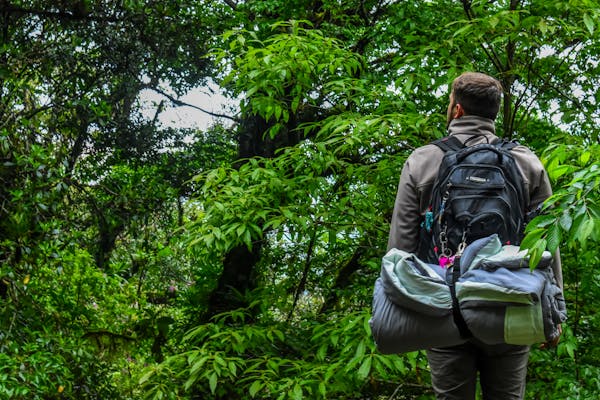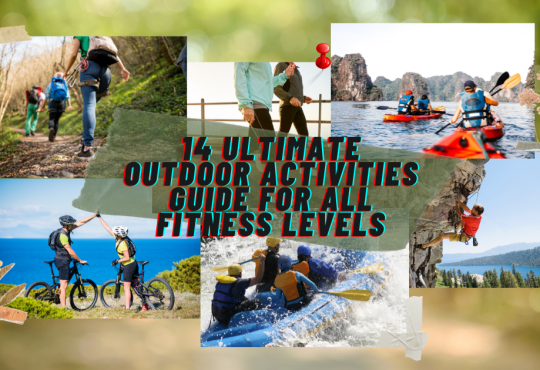Camping offers a refreshing escape from the hustle and bustle of daily life, providing an opportunity to reconnect with nature, enjoy time with friends and family, or even find solitude in the great outdoors. Whether you are an experienced camper or a first-timer, having the right essential camping equipment can make or break your outdoor adventure. In this article, we will cover all the vital gear you need, tips on how to choose the best equipment, and why each item is important for a comfortable, enjoyable, and safe camping experience.

1. Tents: Your Home in the Wild
When thinking about essential camping equipment, the first thing that comes to mind is undoubtedly the tent. A tent serves as your shelter from the elements and can be the difference between a restful night under the stars and a miserable, sleepless experience. Here are key considerations when choosing a tent:
a. Tent Size
Depending on how many people will be sharing the tent, you’ll need to choose the right size. Tents are rated by the number of occupants they can accommodate. However, it’s often wise to choose a tent slightly larger than what you think you’ll need. For example, a “four-person tent” might be comfortable for two adults with extra gear but might feel cramped with four people.
b. Seasonality
Tents come in different designs based on the season and weather conditions:
- 3-season tents: Ideal for spring, summer, and fall camping. They offer good ventilation and protection from rain and wind but are not suited for heavy snowfall.
- 4-season tents: Designed for winter camping and mountaineering, they are more robust and provide additional protection from extreme weather, including snow and high winds.
c. Setup and Durability
Look for tents that are easy to set up, especially if you’re new to camping. Freestanding tents with color-coded poles and simple clip systems are user-friendly. Durability is another crucial factor—check the material of the tent poles and fabric. Strong aluminum poles and ripstop nylon fabric are good choices for most campers.
2. Sleeping Bags: Staying Warm and Comfortable
A good night’s sleep is crucial for enjoying your camping trip, and that starts with the right sleeping bag. Like tents, sleeping bags come in a variety of designs and temperature ratings, depending on the type of camping you plan to do.
a. Temperature Ratings
Sleeping bags are rated by the lowest temperature at which they will keep you comfortable. When choosing a sleeping bag, consider the lowest temperatures you expect to encounter. For example:
- Summer bags: Rated for temperatures above 35°F (2°C).
- 3-season bags: Rated for 20°F to 35°F (-6°C to 2°C).
- Winter bags: Rated for temperatures below 20°F (-6°C).
b. Bag Shape
Sleeping bags come in several shapes, each with advantages:
- Rectangular: These provide plenty of room to move but may not retain heat as efficiently as other shapes.
- Mummy: Snug-fitting and tapered at the feet, these bags offer excellent heat retention, making them ideal for colder conditions.
- Double bags: Perfect for couples, these are wider and accommodate two people.
c. Insulation Type
Sleeping bags use different types of insulation, either synthetic or down:
- Down insulation: Lightweight, compressible, and offers excellent warmth. However, it loses its insulating properties when wet.
- Synthetic insulation: More affordable and retains heat even when wet, though it’s bulkier and less compressible than down.
3. Sleeping Pads: Cushion and Insulation
A sleeping pad not only provides comfort but also insulates you from the cold ground. Skipping this essential camping equipment can result in an uncomfortable and cold night’s sleep.
a. Types of Sleeping Pads
- Self-inflating pads: These combine foam and air for comfort and insulation. They’re easy to use and offer a good balance between comfort, weight, and durability.
- Air pads: Lightweight and compact, air pads are excellent for backpacking but can require more effort to inflate and deflate.
- Foam pads: Closed-cell foam pads are durable and inexpensive. They don’t require inflation and are perfect for ultralight backpacking or cold-weather camping since they offer great insulation from the ground.
4. Backpacks: Carrying Your Gear
The type of backpack you need depends on the kind of camping you’re planning. For a short trip, you might only need a daypack, but for longer trips or backpacking, a larger pack with more capacity is essential camping equipment.
a. Capacity
Backpacks are measured in liters:
- Daypacks (20–30 liters): Great for day hikes or overnight trips where you don’t need to carry much.
- Weekend packs (40–60 liters): Ideal for 2–3 day trips where you’ll be carrying extra gear like clothing, food, and a sleeping bag.
- Expedition packs (60+ liters): Designed for extended trips, these packs can carry all the gear you need for several days or even weeks in the backcountry.
b. Fit and Comfort
A properly fitting backpack is crucial for comfort, especially when carrying heavy loads over long distances. Look for packs with adjustable shoulder straps, hip belts, and load lifters that distribute the weight evenly.
c. Features
Additional features like hydration reservoirs, rain covers, and external gear loops can make your camping experience easier and more enjoyable. When backpacking, water-resistant or waterproof materials and strong zippers are a must.
5. Camp Kitchen: Food and Cooking Essentials
Even in the wilderness, a good meal can boost morale. Here’s a breakdown of the essential camping equipment you need to prepare, cook, and enjoy your meals.
a. Stove
While cooking over an open fire is an iconic camping experience, having a portable stove is more reliable. The two main types of camping stoves are:
- Canister stoves: Lightweight and easy to use, these stoves screw onto prefilled fuel canisters, making them perfect for backpackers and campers who need a quick setup.
- Liquid fuel stoves: These stoves are versatile and perform well in cold weather or at high altitudes. They use white gas, kerosene, or unleaded gasoline.
b. Cookware
You don’t need a full kitchen in the wild, but a few essential items will make your life easier:
- Pots and pans: Lightweight, durable, and designed to heat evenly. Nonstick options are great for easy cleanup.
- Utensils: A spatula, spoon, and tongs are handy, but compact, multifunctional utensils like sporks are great for saving space.
- Portable grill: For those who prefer the taste of grilled food, a portable camping grill can be a fantastic addition to your cooking setup.
c. Food Storage
Keep your food organized and safe from wildlife:
- Bear-resistant containers: Required in some camping areas, these containers protect your food from bears and other animals.
- Coolers: For car camping, a quality cooler is essential to keep perishable foods fresh. Look for coolers with thick insulation and a good seal to maximize cooling time.
6. Water Filtration Systems: Staying Hydrated Safely
Clean water is a must when camping, but you can’t always rely on the availability of potable water at your campsite. Here’s how to ensure you have safe drinking water.
a. Water Filters and Purifiers
A water filter is designed to remove bacteria and protozoa from water, while purifiers take things a step further by also eliminating viruses. Options include:
- Pump filters: Allow you to manually pump water through a filter into your container.
- Gravity filters: These use gravity to pull water through a filter, making them ideal for filtering large quantities of water.
- Chemical purifiers: Tablets or drops that you add to water to kill harmful microorganisms. They’re lightweight and compact but can leave a chemical taste.
b. Water Bottles and Hydration Systems
Stay hydrated throughout your trip by using durable water bottles or hydration reservoirs. Collapsible water bottles are great for saving space, while hydration reservoirs with a hose allow you to drink hands-free while hiking.
7. Lighting: Bringing Light to the Dark
The night in the wilderness can be pitch black, so reliable lighting is another piece of essential camping equipment.
a. Headlamps
Headlamps are compact, lightweight, and hands-free, making them perfect for nighttime navigation or tasks around the campsite. Look for headlamps with adjustable brightness levels and long battery life.
b. Lanterns
Lanterns provide broader illumination around your campsite and are great for communal areas. Some are battery-operated, while others use fuel or even solar power.
8. Navigation: Maps, Compasses, and GPS
While many modern campers rely on GPS devices or smartphone apps, it’s always wise to have traditional navigation tools as a backup.
a. Maps and Compasses
A good topographic map and compass should always be part of your camping gear, especially if you’re heading into backcountry areas. Learning basic map and compass skills is crucial for safety in case your electronic devices fail.
b. GPS Devices
Handheld GPS devices are more reliable in remote areas where cell service may be limited. They allow you to track your route, set waypoints, and navigate accurately in unfamiliar terrain.
9. First Aid Kit: Be Prepared for Injuries
Accidents can happen, even on the most well-planned camping trips. A well-stocked first aid kit is essential camping equipment for handling minor injuries or medical issues.
a. Basic Supplies
Your first aid kit should include bandages, antiseptic wipes, gauze, adhesive tape, pain relievers, tweezers, scissors, and blister treatment.
b. Personal Medications
Don’t forget to pack any personal medications you might need, including allergy treatments or medications for pre-existing conditions.
c. Specialized Supplies
If you’re hiking in tick-prone areas, include a tick removal tool. For more remote camping trips, consider including a wilderness first aid guide.
10. Clothing and Footwear: Staying Dry and Warm
Appropriate clothing is an essential part of your camping gear. Dressing in layers allows you to adapt to changing weather conditions.
a. Base Layer
Moisture-wicking base layers keep sweat off your skin, which is crucial for staying dry and warm. Look for synthetic materials or merino wool.
b. Insulating Layer
An insulating layer, like a fleece jacket or down vest, provides warmth during colder parts of the day or night.
c. Outer Layer
A waterproof and windproof outer layer (rain jacket and pants) protects you from the elements.
d. Footwear
The right footwear depends on the type of terrain you’ll be hiking or camping in. Sturdy hiking boots with ankle support are great for rough trails, while lightweight shoes or sandals might suffice for car camping or easy hikes.
Camping is an incredible way to explore the outdoors, but having the right essential camping equipment is key to a successful trip. Whether you’re setting up camp in the mountains, by a lake, or in a forest, the gear you bring along will ensure you stay safe, comfortable, and well-prepared. From tents and sleeping bags to water filtration systems and cooking gear, each item plays a crucial role in enhancing your camping experience.
Planning ahead and investing in quality equipment will not only improve your current camping trip but also ensure you’re ready for future adventures in the great outdoors. So pack smart, head out into nature, and enjoy all that camping has to offer!





